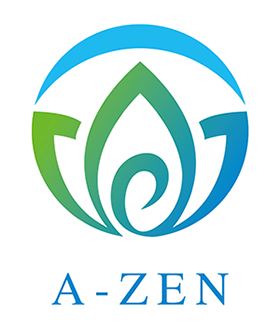How to Make Designs for Warp Knitting Jacquard Shoes?
Double-needle bar raschel jacquard warp knitting machine includes single piezo jacquard machines, such as RDJ5/1, RDJ6/1, RDJ7/1, and double piezo jacquard machines, such as RDJ4/2, and RDJ6/2, and both of them two machines are also named as seamless warp knitting machines.
RDJ6/2 warp knitting machine is for producing jacquard-patterned shoe uppers fabrics, RDJ6/2 contains two separate jacquard bars and four ground bars.
In this article, we are going to study how to create warp knitting double jacquard pattern shoe upper designs and the know-how of its finishing process.
I. About RDJ4/2(EL) and RDJ6/2(EL)
The double-Needle Bar machine with Piezo-Jacquard technology is capable of joining separate fabric surfaces with various patterns (double-needle bar fabric is also called spacer mesh fabric, which contains two pieces fabric uppers and middle connection part). Its application includes outwear, seamless wear such as pantyhose, yoga wears, sportswear, and shoe uppers. All grounds bars, as well as jacquard bars, are controlled by an electrical driving system (EL system), and the yarn control system adopts an EBC yarn let-off system.
RDJ Warp Knitting Machine Specification:
·working width: 90”, 138”;
·gauge: E22, E24, E28;
·pattern drive: EL drive;
·knock-over comb bar distance: 1-10mm;
·knitting elements: two individual latch needle bars, two knock-over comb bars and two stitch comb bars;
·fabric take-up: electronic drive;
·batching device: electronic drive.
About Guide Bars
Four (two) ground guide bars for the ground structure, and two piezo-jacquard guide bars (separate jacquard), which make stitch-forming on both needle bars.

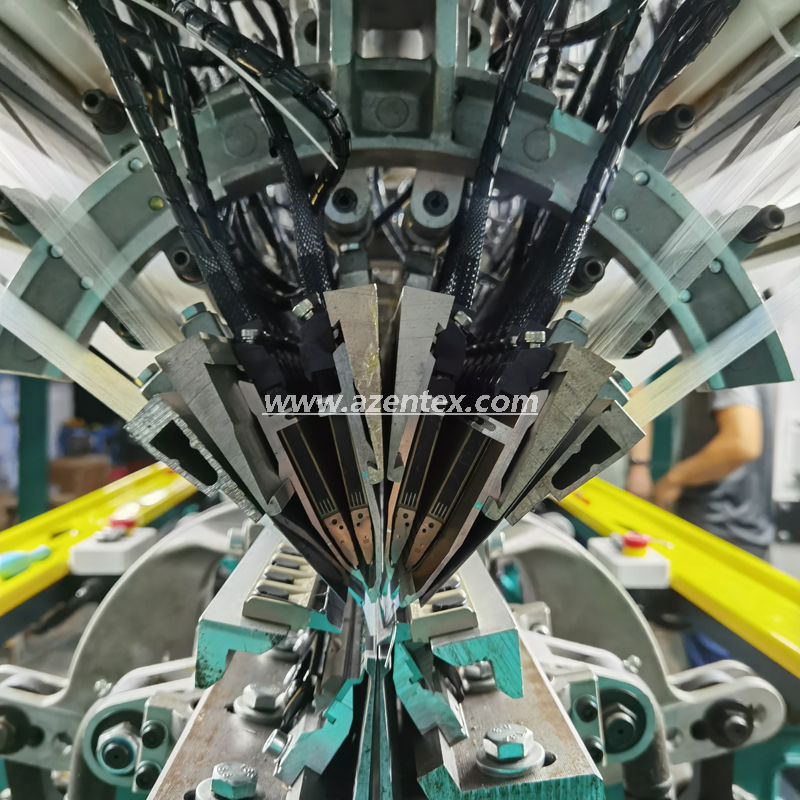
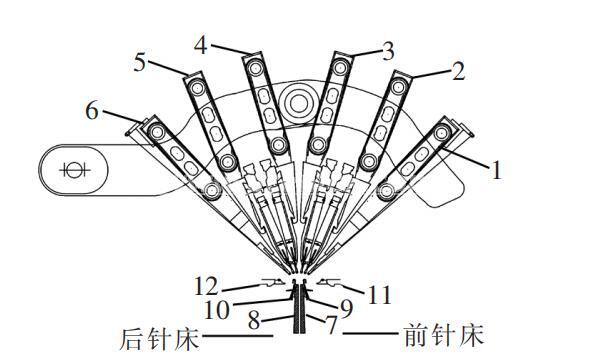
"1": GB1; "2、3": JB2(JB2.1, JB2.2); "4、5": JB3 (JB3.1, JB3.2); "6":GB4; "7": Front knock-over comb bar;
"8": Back knock-over comb bar; "9、10": Latch Needle Beds; "11、12": Sinker Beds.
GB1 stitch-forming on the front needle bed, GB4 stitch-forming on the back needle bed; JB2 and JB3 can make stitch-forming on both beds. No.9 and No.10 are latch needle beds, and the latch needle of RDJ6/2 is a 50.60G02 spec needle, the needle brand is Groz-Beckert.
The yarn spec suggested using above 15.6tex (140D), if the knock-over comb bar distance is too narrow, the yarn is easy to accumulate so that they can not form new loops. While if the knock-over distance is too wider, the machine would be difficult to run. We suggest the knock-over comb bar distance set between 1.2-1.5 mm.
II Basic Structure of Double Needle Jacquard Designs (RDJ4/2)
The Basic Logic of Piezo Jacquard Structure
As we are clear that GB1 and GB4 make pillar stitch structures, and the JB2 mostly form stitches on the front bed and JB3 on the back one. The notation of each ground bar is:
GB1: 1-0-1-1/0-1-1-1//;
JB2: 1-0-1-1/1-2-1-1//;
JB3: 1-1-1-2/1-1-1-0//;
GB4: 1-1-0-1/1-1-1-0//.
Warp-knitted shoe upper patterns are mainly formed by JB2 and JB3's guide needles movements. When the piezo jacquard needles do not move on both odd and even courses, under this condition the light structure forms. When the piezo jacquard guide needles move on odd courses, the net structure forms, and when they move on the even courses, the heavy structure forms.
This is the basic fabric-forming structure logic of the piezo jacquard needles' movements.
Various Warp-knitted Structure
When the ground bars GB1 and JB2 form stitch only on the front bed and JB3 and GB4 form stitch only on the back bed, the separate net effect appears. As image 2b shows clearly, when the net of the front bed and net of the back bed move at the same needle position, the shoe textile will show empty holes, which could be used for shoelace holes.
And as image 2c notes that when JB3 forms stitch on the front bed with colored or different spec yarn from JB2 and GB1, the two separate surfaces would be joined together to become a unit complete textile. Lastly, in image 2d, when the JB2 forms stitches on both front and back beds, while JB3 only does on the back bed, the separate surfaces are also joined and the front surface only shows yarns from GB1 and JB2.
To sum up, the different use of jacquard bars would lead to a total of different shoe upper structures.
The Example of How to Make Warp-knitted Double Jacquard Shoe Upper Fabrics
1. Calculate the Size of the Shoe Sample:
Before starting design development, we shall learn how to change shoe size in design courses.
T means a total column of shoes, and V means total courses of shoes. W stands for size on the horizontal side(cm), and H means size on the vertical side(cm).
The calculation is as follows:
T=W*WPC;
V=H*CPC.
2. Software Jacquard Color Matrix
In the warp knitting design software, “H” stands for Piezo Jacquard needles non-movement, and “T” means Piezo Jacquard needles movement.
There are many colors in the warp knitting design software, and different color stands for different mesh structure, here we give you a brief example:
4# and 8# colors stand for Light Structure, 1# means Heavy Structure, 12# represents Net Structure, 26# is a symbol of Middle Structure between Light Structure. 25# and 18# mean Link Structure between Net Structure and Heavy Structure accordingly.
The different combinations of these colors make various mesh effects on warp-knitted shoe uppers.

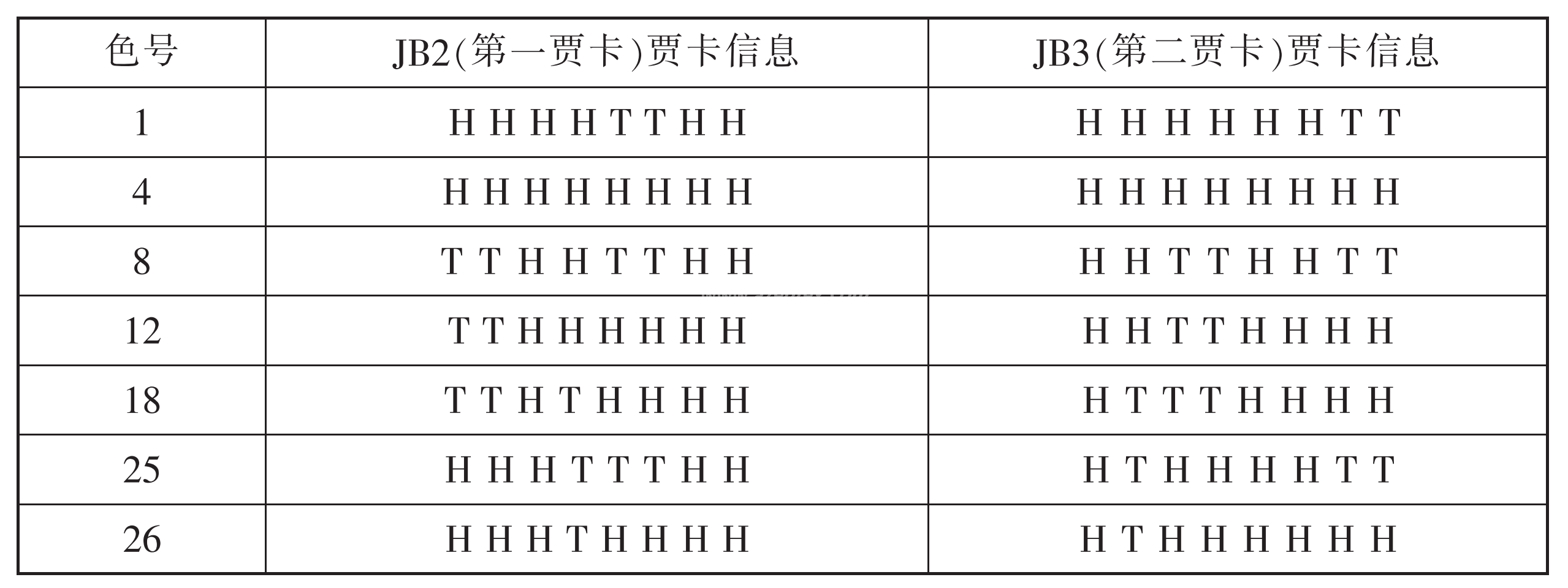

Yarn Spec. Used on Shoe Uppers:
GB1: 15.6 tex/48F (140D/48F) semi-bright nylon FDY;
JB2: 23.3 tex/72F (210D/72F) semi bright nylon DTY;
JB3: 22.2 tex/96F (200D/96F) semi bright polyester DTY;
GB4: 16.7/48F (150D/48F) semi bright polyester DTY.
Warp Knitting Machine Type & Technique Parameter:
RDJ4/2, Gauge E24, and the working width is 138”;
Knock-over comb bar distance: 0.65-1.0 mm (knock-over comb bar adjusted by stitch comb swiveling device);
CPC on machine: 16 c/cm;
Finished weight: 478.5g/m2;
Running Speed: 450 r/min;
Yarn Let-off (EBC):
·GB1: 1,700 mm/rack;
·JB2: 2,380 mm/rack;
·JB3: 2,500 mm/rack;
·GB4: 1,750 mm/rack;
Jacquard Design Matrix
JB2 includes 1#, 4#, and 12# colors, and JB3 includes 1#, 4#, 12#, 18#, 25#, and 26# colors. JB3 forms stitch on both front and back beds. Because of this, GB4 and JB3 run more yarn than GB1 and JB2 do.
Finished Sample:
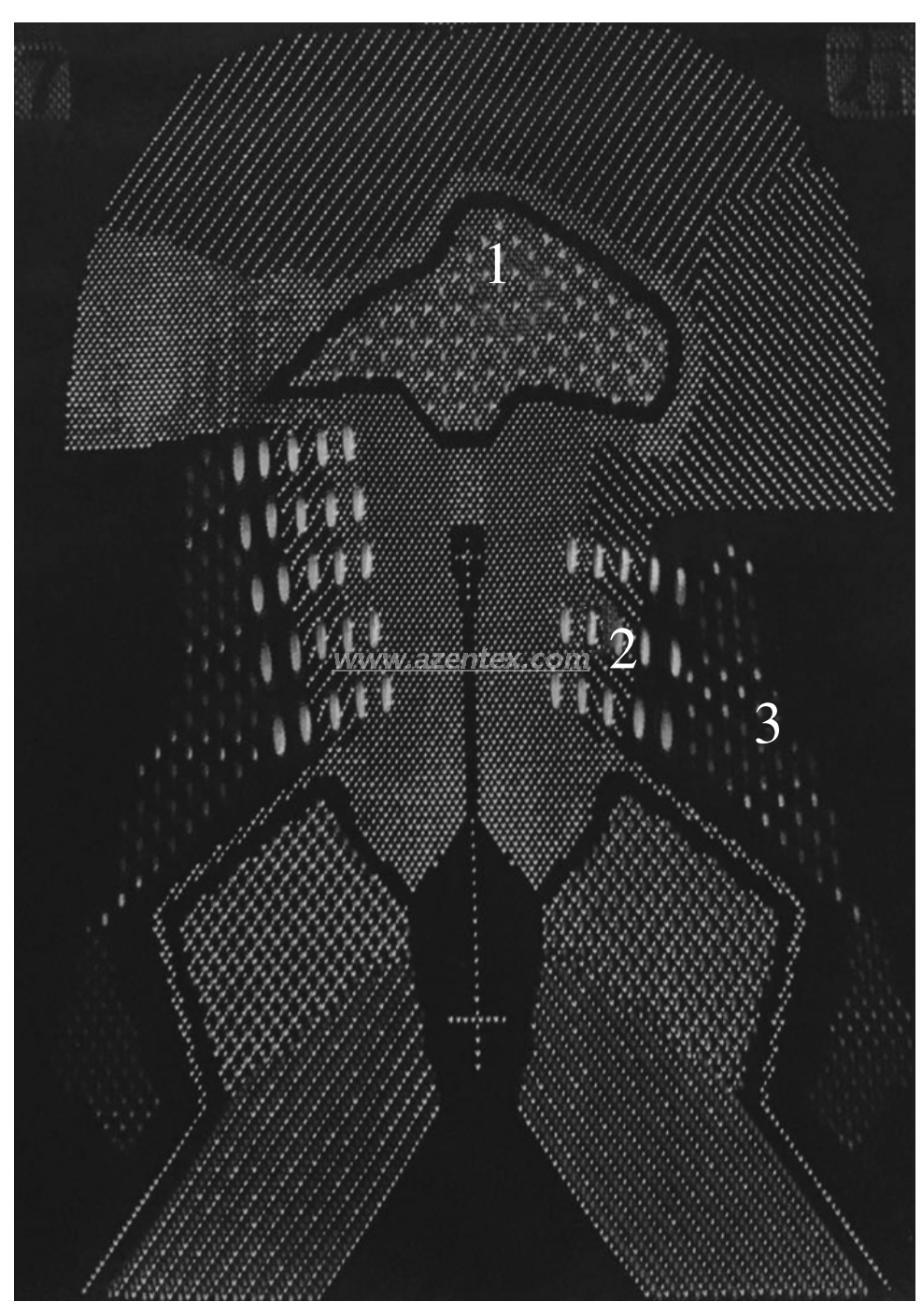
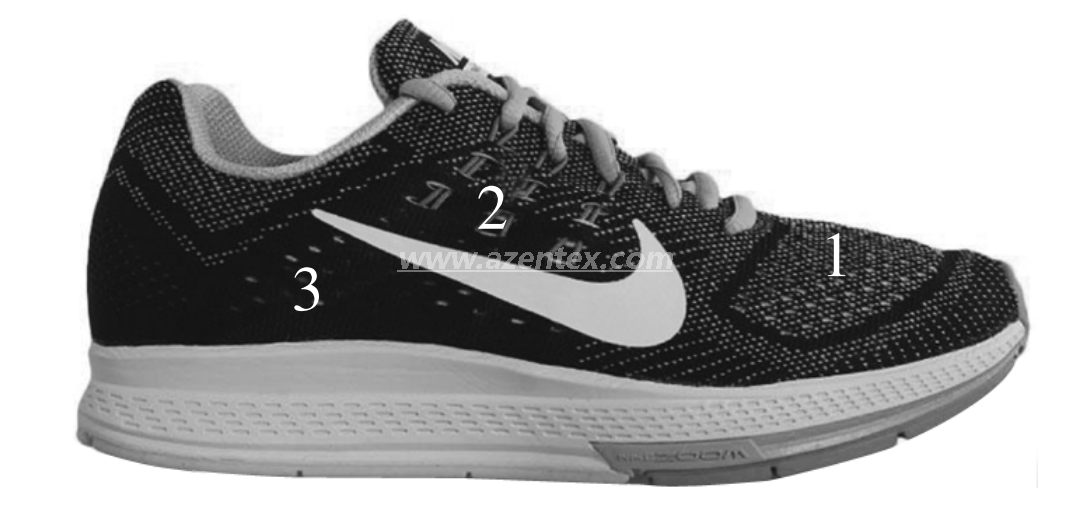

III Some Tips of Shoe Uppers Finishing Process
It is noted that setting and finishing are vital to the shoe upper fabrics process, here we share one practical experience with you.
Firstly, we need to measure the size of shoe upper samples carefully and match them with a transparent cardboard tool (note that shoe fabric is 3 cm bigger than standard cardboard).
After pre-setting, the fabric size is shall be 0.5 cm bigger than standard cardboard.
The following steps are dyeing and setting. To make sure the shoe upper size is generally correct, the tolerance scope shall be within -2~2 mm.
Above mentioned tips are experienced skills from the production, of course, making a high-end shoe upper fabric is not an easy job, however, we commit ourselves to making a contribution to the continuous development of the warp knitting technology.
RDJ4/2 Machine Link: RDJ4/2, RDJ6/2 Catalog
Related Resource: How to produce superior warp-knitted shoe upper fabric?
You are welcome to share your opinion and comments with us or send them to our email: info@azentex.com
We believe that the shared knowledge will extend our passion to explore warp knitting technology.
English
العربية
Français
Русский
Español
Português
Deutsch
italiano
日本語
한국어
Nederlands
Tiếng Việt
ไทย
Polski
Türkçe
ភាសាខ្មែរ
Bahasa Melayu
ဗမာစာ
Filipino
Bahasa Indonesia
magyar
Română
Čeština
Монгол
қазақ
Српски
हिन्दी
فارسی
Slovenčina
Slovenščina
Norsk
Svenska
українська
Ελληνικά
Suomi
עברית
Dansk
اردو
Shqip
বাংলা
Hrvatski
Afrikaans
Eesti keel
Oʻzbekcha
latviešu
Azərbaycan dili
Bosanski
Български
ქართული
Lietuvių
Wikang Tagalog
